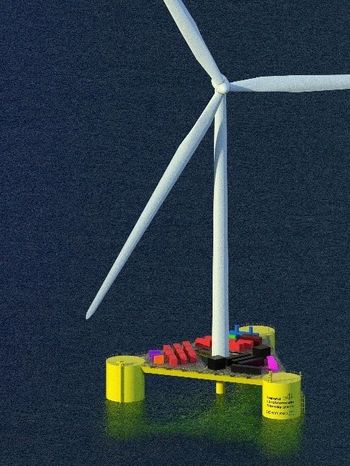Low-carbon hydrogen: for what uses?
We hear a lot about hydrogen as a promising solution for reducing carbon emissions. However, depending on the processes used to produce hydrogen, it is important to consider the possible uses in terms of cost and overall energy efficiency. In the future, can we expect hydrogen to be a universal fuel? In view of current technologies, this is a matter of debate.

Interview with André Merlin, Honorary Chairman of RTE, Former President of CIGRE
Conventional hydrogen production processes
Although it is the most common element in the universe, constituting the fuel of the sun and also of stars, hydrogen does not exist on earth in its native state, or very little.
The hydrogen used on earth must therefore first be produced. Without going into the details of how to produce this gas, the most conventional method is to use methane. The manufacturing process currently used to produce 90% of the hydrogen used in France and around the world is the reforming process, in which methane and water combine to produce a mixture of carbon monoxide and hydrogen. This process consumes a large amount of energy, with the production of one kilogram of hydrogen requiring 33 kWh of energy.
An additional step is required to convert the resulting carbon monoxide (which is highly toxic) into carbon dioxide CO2. In the end, the production of one kilogram of hydrogen results in the production of 10 kg of CO2. One can try to sequester this CO2, but the additional cost is significant.
The other technique frequently used is the pyrolysis of methane. The interest is to produce solid carbon together with hydrogen. If there is a possible use for this solid carbon, then this justifies the use of this technique.
In both cases, the production cost of hydrogen is relatively low, around 1.5 to 2 euros per kg.
Hydrogen production by electrolysis
Another hydrogen production process, which is currently attracting a lot of interest, is water electrolysis. However, this solution does not represent more than 1% of the current hydrogen production because it is still very expensive.
Water electrolysis is a technique that has been known for a long time. It has made great progress in recent times thanks to increasingly efficient electrolysers.
To give an order of magnitude, the production of one cubic metre of hydrogen requires 5 kWh of electricity with a good efficiency industrial electrolyser, around 60%. The most efficient ones go up to 63%, bearing in mind that thirty years ago, the efficiency of these electrolysers was only about 25%.
With an electrolyser having an efficiency of 60%, 5 kWh of electricity can produce 1 m3 of hydrogen at atmospheric pressure, corresponding to an intrinsic energy of 3 kWh.
This hydrogen produced by electrolysis is in gaseous form. The problem is to contain it in a relatively small space. It is therefore necessary to provide a compression system. The level of compression is relatively high, around 700 bars. This makes it possible to envisage its transport and distribution.
1 kg of hydrogen corresponds to approximately 11 m3 of hydrogen gas at atmospheric pressure and room temperature.
The production of one kilogram of hydrogen by electrolysis therefore represents an intrinsic energy of 33 kWh, and corresponds to a volume of 11 m3 at normal pressure. The volume occupied at 700 bar is about 23 litres. This gives an idea of the size of the tank needed to store this compressed hydrogen in a vehicle. For example, hydrogen-powered passenger cars store about 5 kg of hydrogen at 700 bar. The volume of the tank is about 120 litres, and it weighs about 100 kg. This stored capacity offers a range of around 500 km.
It would be possible to go as far as liquefying the hydrogen to store it, but this would have the disadvantage of requiring even more energy because the temperature would have to be lowered to -253°C. The compression system consumes about 15% of the energy stored. Once compressed, this hydrogen contains only half the energy used to produce it by electrolysis.
Transportation of hydrogen
Hydrogen is a light gas that diffuses very easily through plastic and steel, if the walls are not thick enough. The slightest crack in the tank can cause a leak. And when we talk about leakage, we think of the risk of explosion. Hydrogen is explosive when it comes into contact with air, which can of course have disastrous consequences.
This means that the hydrogen has to be transported in particularly thick, and therefore expensive, containers. To store about 12 kg of hydrogen, a tank of between 300 and 400 liters is needed, weighing 240 kg. Thus the mass of the content, the hydrogen, represents only 5% of the mass of the container.
When transporting hydrogen at a pressure of 700 bar, the mass of the hydrogen on board represents only 5% of the total, the rest being the mass of the tank to ensure the seal.
The production of electricity from a fuel cell
Let's talk about the production of electricity from a fuel cell powered by hydrogen. This transformation is based on a well-known technology with an efficiency of around 50%. This means that if, for example, a quantity of hydrogen corresponding to 3 kWh is injected, the fuel cell will give off about 1.5 kWh of electricity. This final energy should be compared with the energy used to produce the hydrogen by electrolysis, which in this case is 5 kWh.
In the end, the electricity produced by the cell is almost four times less than that injected into the electrolyzer to produce this hydrogen. These results correspond to today's technologies, but we can expect progress in this field. Perhaps in the future we will achieve a ratio of 1/3 instead of the current 1/4.
When electricity produced from hydrogen obtained by electrolysis is used, it costs four times as much as the electricity injected into the electrolyzer, not counting the depreciation costs of the infrastructure: electrolyzer, compressor, fuel cell.
The use of decarbonated hydrogen produced from electricity should be reserved as a priority for industry, agriculture and mass mobility. Current projects concern hydrogen trains, ships and now there is talk of aircraft. The cost aspect must of course be taken into account. The SNCF [the French Railways Company] has announced that with the use of hydrogen, the price of a train ticket could increase by 30%.
For maritime transport, methane is a competitor to hydrogen. Methane is easier to use. Of course, methane is not as good for the environment as hydrogen, but it is nevertheless a much better solution than the heavy fuel oil currently used.
For passenger cars, hydrogen is already used, but it is produced by reforming methane. If it were to be produced by electrolysis, the cost would be much higher.
The use of hydrogen to manage the intermittency of renewable energies
Another use of hydrogen is storage to cope with the intermittency of renewable energies, i.e. wind and photovoltaic power.
In this case, the calculation is done very quickly. As we saw earlier, the cost is multiplied by four. To this must be added the cost of the necessary infrastructure from the electrolyzer to the fuel cell, not forgetting the compression equipment. The depreciation costs of this infrastructure are added to the cost of the kWh injected into the grid. In economic terms, this solution is not currently viable. I think that using hydrogen storage to manage this intermittency is not realistic.
With what electricity can this low-carbon hydrogen be produced?
Some favour the use of controllable production sources such as nuclear or hydropower, while others focus on new renewable energies (wind, solar). It is clear that from an economic point of view, the cheapest possible electricity must be used to produce hydrogen. Today, this is either hydraulic energy, when this energy can be produced at a very advantageous price, as for example at Inga in the Democratic Republic of Congo, or nuclear energy, preferably at off-peak times, when it is not used to meet the needs of the national electricity network.
In summary
The low-carbon hydrogen that is being considered for mass production to meet the challenge of carbon neutrality should be reserved for uses where electricity is not suitable. This of course concerns the current uses of hydrogen, notably in the industrial sector and agriculture. For new uses, mass mobility seems to be an appropriate option, whether it be road, rail, sea or perhaps even air.
Uses such as electricity storage to manage the intermittency of renewable energies are to be excluded for economic reasons. This intermittency can be managed at a lower cost by using conventional non-carbon generation methods (nuclear or hydro).
About André Merlin

André Merlin is the founder and first Chairman of the Executive Board of RTE, of which he is now Honorary Chairman. He was co-founder of ETSO, the European association of electric transmission system operators, special advisor to the European Commissioner for Energy, and Chairman of CIGRE and Medgrid.
Banner and Thumbnail credit: Photo by Olemedia on iStock

